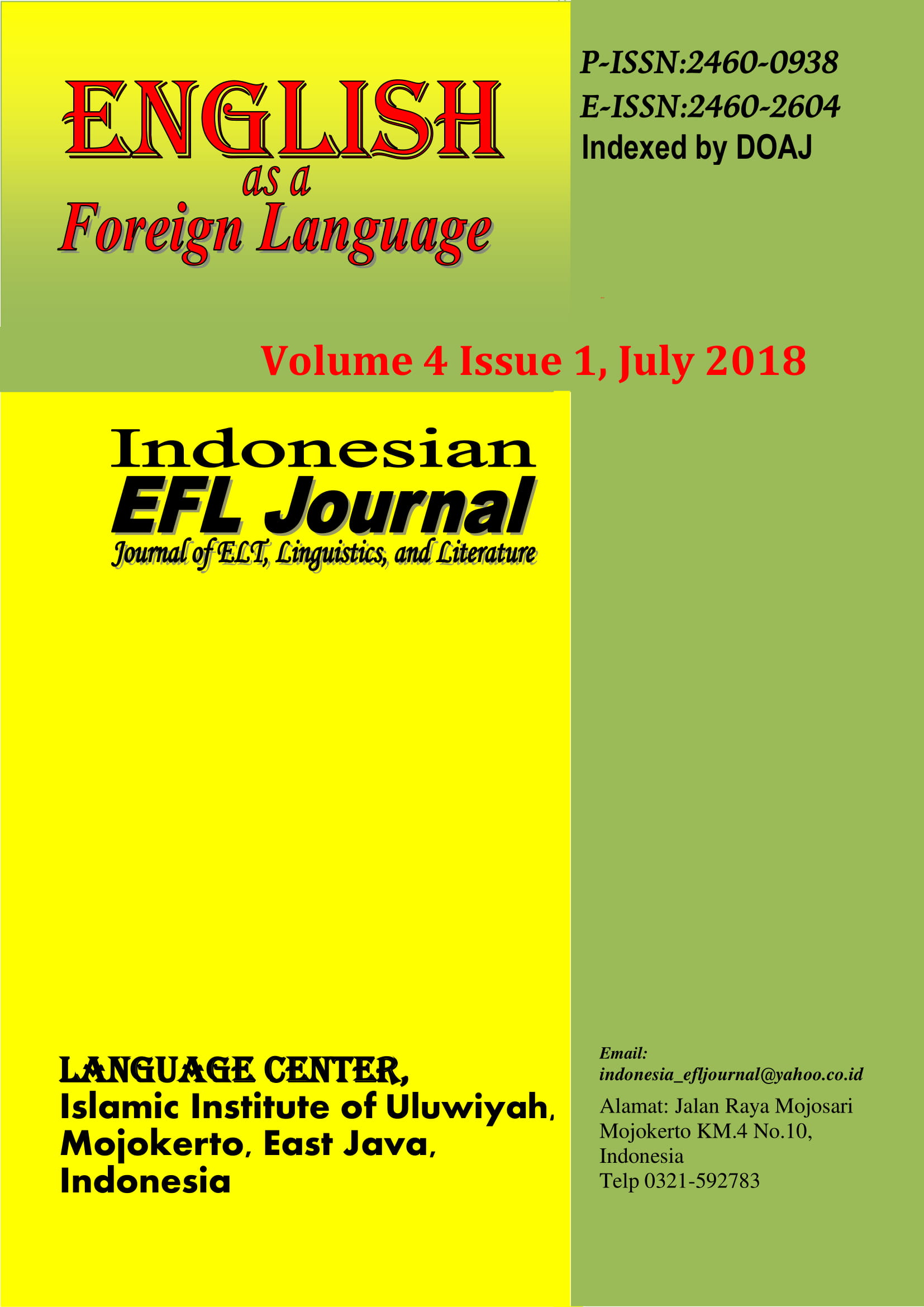Students’ Attitudes towards the Class Visit Project
Abstract
The article reports the classroom visit project experienced by 31 Thai university English major students taking a course titled Introduction to English Language Teaching (EN 391) during the first semester of the academic year 2016. The students worked in small groups, contacted the schools asking permission to observe the English classes. They observed the classroom and took notes of what they have seen and learned. They, then, in a small group, wrote a report and took turns sharing their findings in the classroom. After the completion of the project, the students were asked to answer the questionnaires with two open-ended questions addressing the experience and general impressions of the project. Data were analysed using basic descriptive statistics and content analysis. The results showed that the majority of the students had positive attitudes toward the class visit experience. They perceived it as being useful and memorable. The paper also discusses the implications of the findings.
References
Baker, W. D., & Richmond, K. J. (2008). Preparing Students for Twenty-First Century Literacy.Language Arts Journal of Michigan, 23(2).https://doi.org/10.9707/2168-149X.1116
Barron, B., & Darling-Hammond, L. (2008).Teaching for meaningful learning: A review of research on inquiry-based and cooperative learning (PDF). Powerful Learning: What We Know About Teaching for Understanding. San Francisco, CA: Jossey-Bass.
Cohen, E.G. &Lotan, R.A. (Eds.). (1997). Working for equity in heterogeneous classrooms:Sociological theory in practice. New York: Teachers College Press.
Collins A. M., Brown J. S., & Newman S. (1989). Cognitive Apprenticeship: Teaching the Craft of Reading, Writing, and Mathematics, in Knowing, Learning and Instruction: Essays in Honor of Robert Glaser, edited by LB Resnick, Lawrence Erlbaum, Hillsdale, NJ.
Darling-Hammond, L. (1999).Teacher quality and student achievement: A review of state policy evidence. Seattle, WA:University of Washington, Center for the Study of Teaching and Policy.
Dewey, J. (1938). Experience and Education.New York: Collier Books.
Gardner, R. C., & Lambert, W. E. (1972). Attitudes and motivation in second language learning. Raleigh, MA: Newbury House.
Gardner, R. (1988). Attitudes and Motivation.Annual Review of Applied Linguistics, 9, pp. 135-148.
Harner, J. (2003). How to Teach English. London: Longman.
Hugg, R. and Wurdinge, S. (2007). A Practical and Progressive Pedagogy for Project Based Service Learning.International Journal of Teaching and Learning in Higher Education, 19 (2), pp. 191-204.
Johansen, D., Scaff, C., & Hargis, J. (2009). Interdisciplinary Project-Based Model for Enhanced Instruction of Courses.International Journal for the Scholarship of Teaching and Learning, 3(1). https://doi.org/10.20429/IJSOTL.2009.030122
Kadha, H. (2009). What Makes a Good English Language Teacher?"Teachers' Perceptions and Students' Conceptions in Humanity & Social Sciences Journal 4 (1), pp. 01-11.
Long, M. H. (1996). “The role of the linguistic environment in second language acquisition.†In W. C. Ritchie & T. K. Bhatia (Eds.), Handbook of second language acquisition (pp. 413–468). New York: Academic Press
Maley, A. (2016). “The teacher’s sense of plausibility revisited†in Indonesian Journal of English Language Teaching. 11(1), 1-29.
Marzano, R. J., Marzano, J. S., & Pickering, D. J. (2003).Classroom management that works: Research-based strategies for every teacher . Alexandria, VA: Association for Supervision and Curriculum Developmen.
Mayer, R. (2011) Applying the Science of Learning. Pearson/Allyn& Bacon, 2011.
Sinlarat, P. (2017). Thailand Education 4.0: An educational philosophy for creative and productive citizens. Bangkok: Chulalongkorn University Press.
Thadphoothon, J. (2005).Promoting Critical Thinking in Language Learning Through Computer-MediatedCollaborative Learning: A Preliminary Investigation.Unpublished doctoral thesis, University of Canberra. Available online at http://www.canberra.edu.au/researchrepository/file/264d5c23-6a00-98fe-f08e-b82a83ebb9e7/1/full_text.pdf
The Science and Environment Council of Sarasota County (SEC) (2007). “The Effects of Field Trips on Attitudes toward Science†Available online at https://www.scienceandenvironment.org/files/3413/7020/0321/Science_Curiculum_Evaluation_Report.pdf
Thomas, J. W. (2000). A review of research on project-based learning. San Rafael, CA: Autodesk Foundation.
Vygotsky, L. S. (1978). Mind in society: The development of higher psychological processesCambridge, Mass.: Harvard University Press.
Zeinivand, T., Azizifar, A., and Gowhary, H. (2015). "The Relationship between Attitude and Speaking Proficiency of Iranian EFL Learners: The Case of Darrehshehr City" in Procedia - Social and Behavioral Sciences. Vol 199, pp. 240-247.
Zhao, J. (2015). Project-Based Instruction in Teaching Chinese as a Foreign Language Interdisciplinary Perspectives on Human Behavior, 108–127. https://doi.org/10.4018/978-1-4666-6603-0.CH007
Copyright (c) 2018 Indonesian EFL Journal: Journal of ELT, Linguistics, and Literature

This work is licensed under a Creative Commons Attribution-ShareAlike 4.0 International License.
All rights reserved.
this publication may be reproduced, stored in a retrieval system, or transmitted
in any form or by any means, electronic, mechanical, photocopying, recording.




